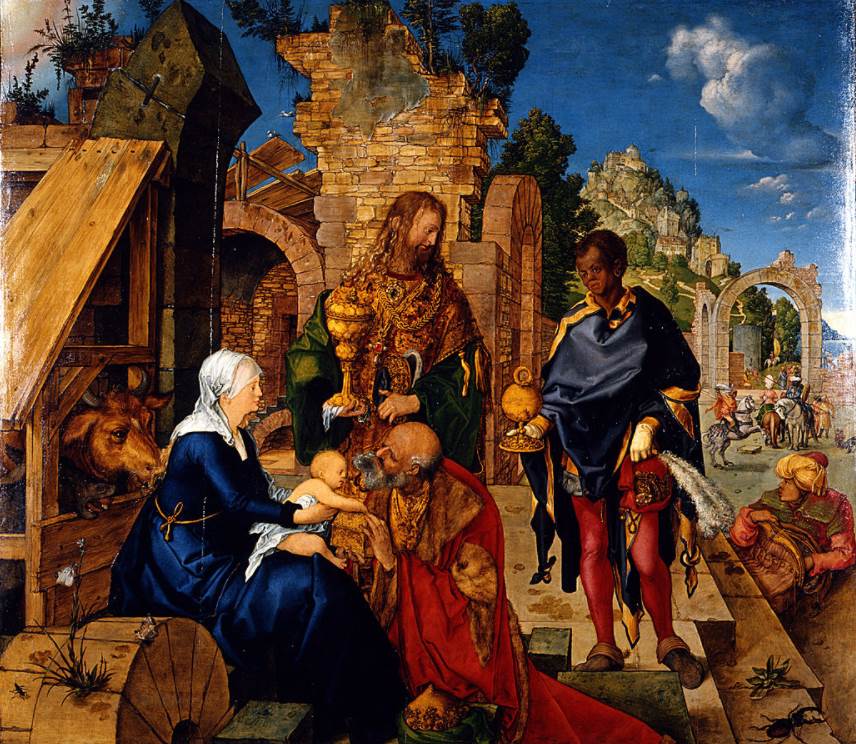Could there be a better place to admire some of the most famous Renaissance paintings in the world than the birthplace of the Renaissance itself?
The Uffizi Gallery is one of the largest art museums in the world and one of the oldest as well. It officially opened its doors in the year 1765 but has been accepting visitors as early as the 16th century.
Situated just across the Piazza della Signoria in the historic heart of Florence, the building in which the main museum is housed, which was completed in 1581, is as fascinating as the collection itself.
Let’s take a closer look at some of the most famous paintings at the Uffizi Gallery, masterpieces that you should not miss when you visit the museum in the capital of the Tuscany region.
1. Annunciation – Leonardo da Vinci
- Date created: 1472-1475
- Dimensions: 98 × 217 centimeters (39 × 85 inches)
Annunciation is one of the earliest completed paintings fully attributed to Leonardo da Vinci (1452-1519), the Italian polymath who had trouble finishing his commissions. He nonetheless became one of the most celebrated artists of the Renaissance.
This work, which he completed in his early twenties while still working n the workshop of his master Andrea del Verrocchio, depicts the announcement of the angel Gabriel that Mary will give birth to the son of God. This work clearly set the tone for the rest of his career as you can see the strokes of genius that would define it already.
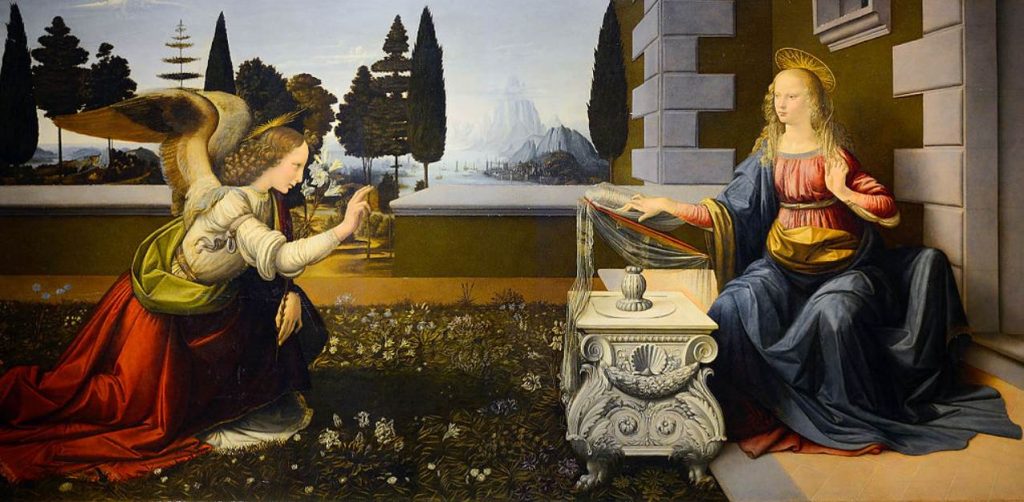
2. The Birth of Venus – Sandro Botticelli
- Date created: Mid 1480s
- Dimensions: 172.5 × 278.9 centimeters (67.9 × 109.6 inches)
The Birth of Venus was painted by Sandro Botticelli (1445-1510), a contemporary of Leonardo da Vinci and one of the leading figures of the Early Renaissance. It depicts the arrival of the goddess Venus in a shell following her birth out of the sea and onto the shore.
This is one of the most famous paintings at the Uffizi Gallery and one of the most iconic images in the museum. Although the depicted scene isn’t up for debate, art historians are still discussing who commissioned the works, well over 500 years after it was completed.
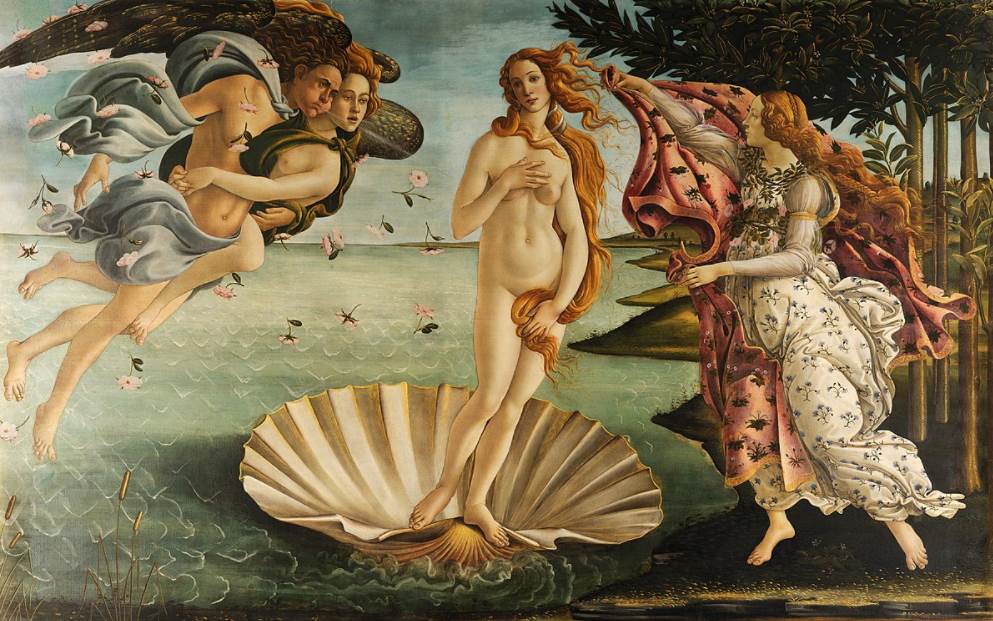
3. Primavera – Sandro Botticelli
- Date created: Late 1470s – Early 1480s
- Dimensions: 202 × 314 centimeters (80 x 124 inches)
Primavera is the other magnum opus of Sandro Botticelli that can be found at the Uffizi Gallery in Florence. Regardless of this notion, they are not related but are nonetheless often discussed together. This work is a panel painting that was completed before the Birth of Venus.
If the Birth of Venus is a heavily-discussed work of art, this one can at least hold a candle against it. It’s one of the most controversial paintings in Western Art and has been described as one of the most written about paintings” in the world as well. Its exact meaning, therefore, remains unknown until today.
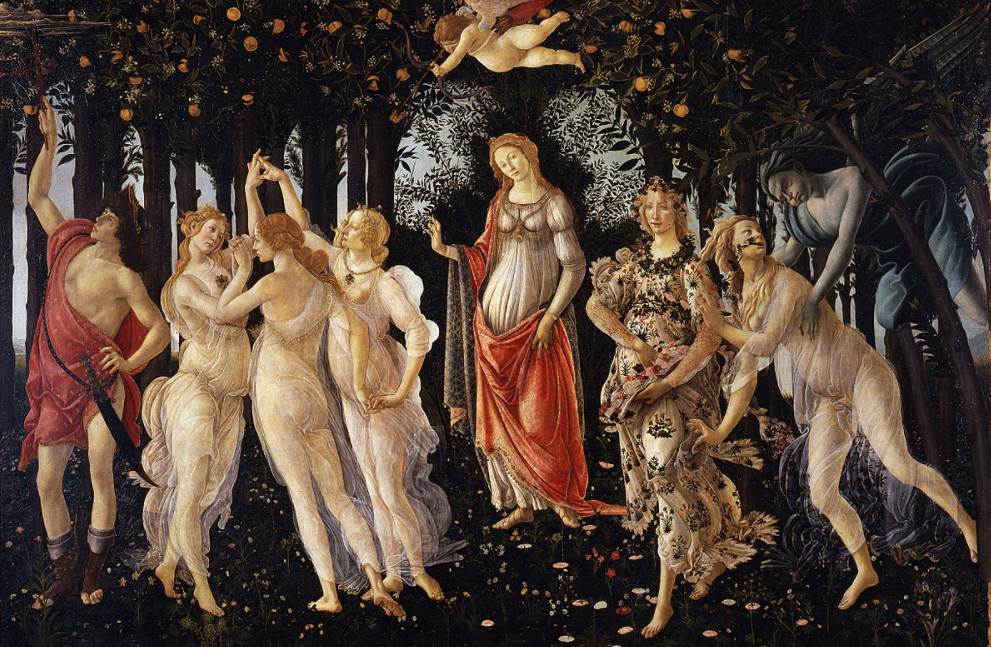
4. Madonna of the Goldfinch – Raphael
- Date created: 1505-1506
- Dimensions: 107 × 77 centimeters (42 × 30 inches)
Madonna of the Goldfinch is also known as “Madonna del Cardellino” and is one of the most remarkable paintings by Raphael (1483-1520), one of the leading and most influential artists of the High Renaissance.
Raphael completed this work along with multiple other scenes featuring the Virgin Mary with her child and John the Baptist during his time in Florence. The similarity in composition and Mary wearing predominantly red and blue are common threads of these works.
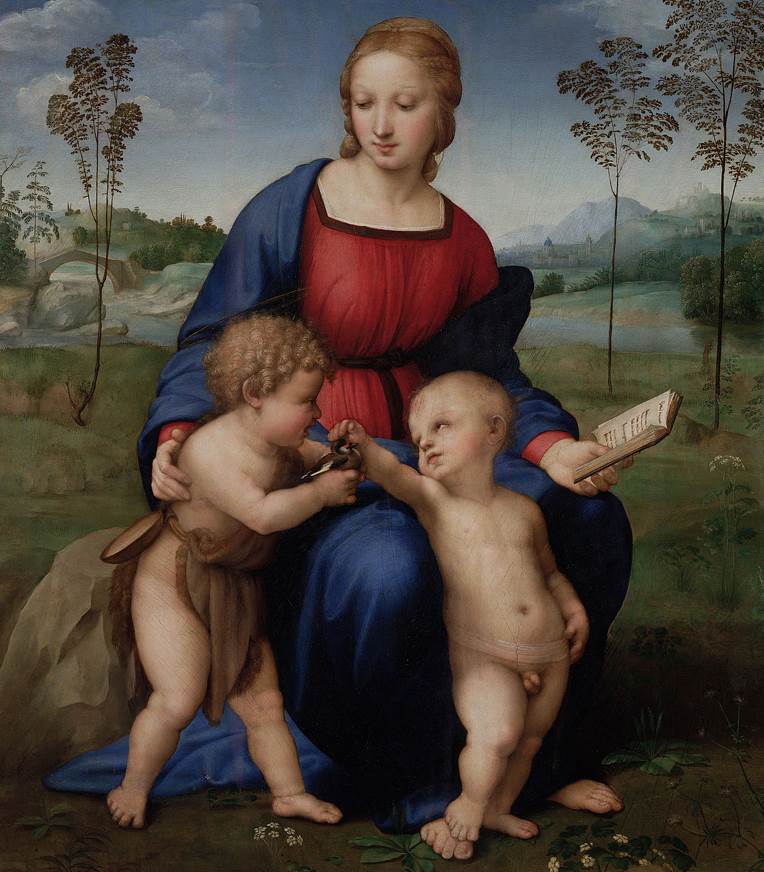
5. Doni Tondo – Michelangelo
- Date created: 1507
- Dimensions: Diameter of 120 centimeters (47.5 inches)
Doni Tondo is also referred to as the “Doni Madonna” and is a remarkable work of art for multiple reasons. It’s the only Michelangelo painting on a panel of the mature artist to survive and still resides in its original 16th-century frame.
The painting was commissioned by a man named Agnolo Doni to commemorate his marriage to a woman from a rich family named Maddalena Strozzi. The name of the painting is a reference to the man who commissioned it from Michelangelo and its shape as “tondo” means “round” in Italian.
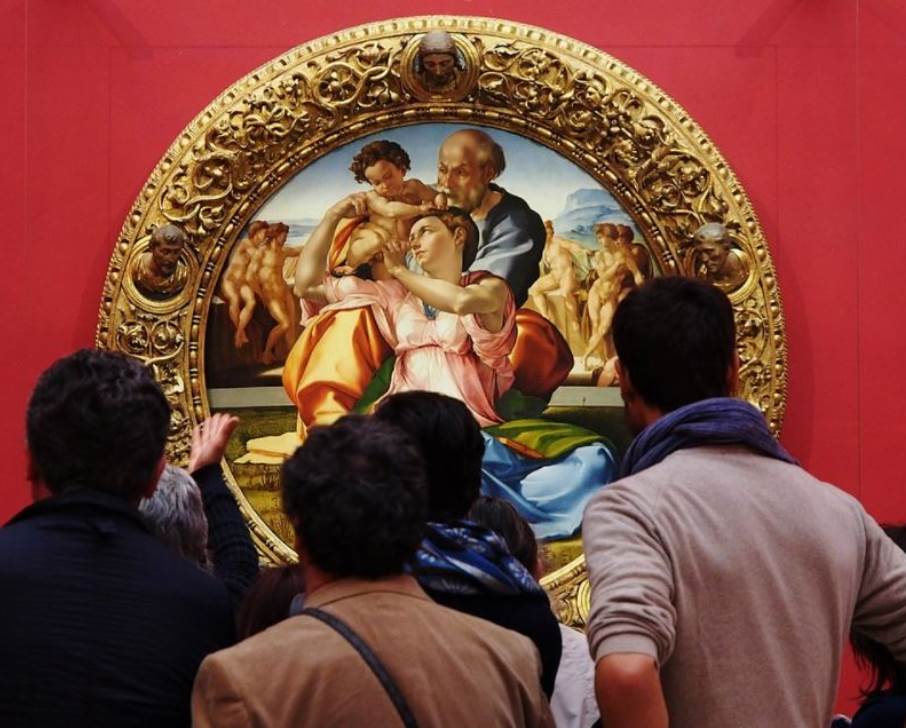
6. Venus of Urbino – Titian
- Date created: 1534
- Dimensions: 119 × 165 centimeters (47 × 65 inches)
The Venus of Urbino is one of the most famous paintings by Titian, one of the leading artists of the Venetian School in the 16th century. It depicts a naked woman in a reclining position in the setting of a Renaissance-style palace.
Titian (1490-1576) based this work on a painting that he believed to have completed called the “Dresden Venus.” This similar-looking work by Giorgione (1574-1510) was completed by Titian following the death of this Renaissance master in the year 1510.
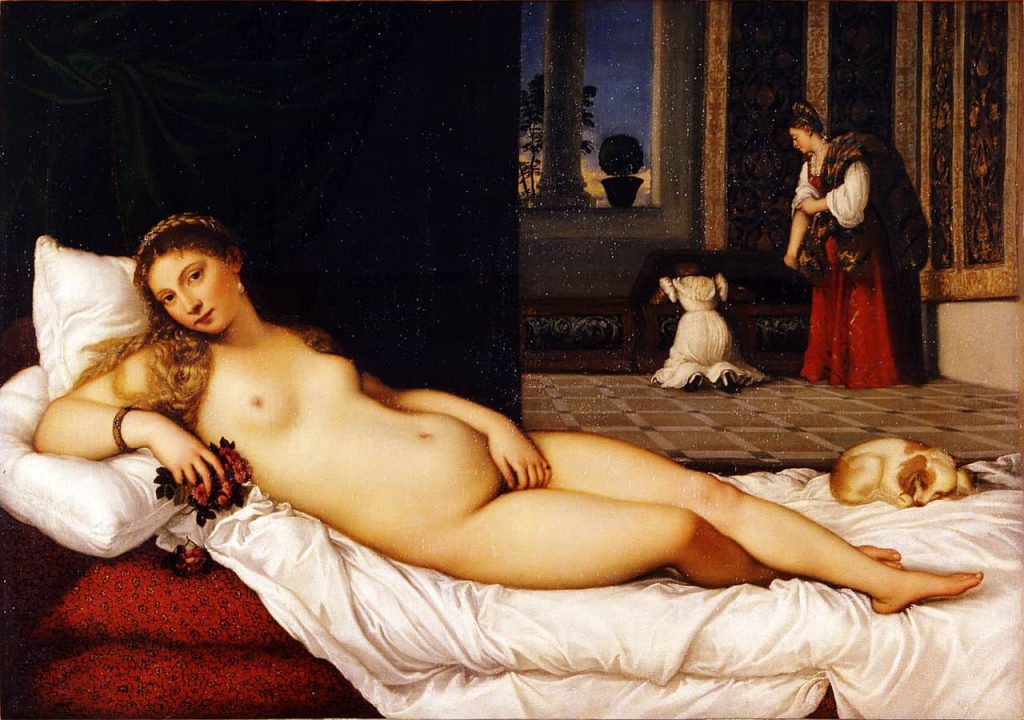
7. The Waterseller of Seville – Diego Velázquez
- Date created: 1618-1622
- Dimensions: 105 × 80 centimeters (41 × 31 inches)
The Waterseller of Seville is one of the most famous paintings of Diego Velázquez which he painted during his early period in Seville. Shortly after completing this work, Velázquez (1599-1660) moved to Madrid where he became the court painter of King Philip IV of Spain.
There are actually 3 paintings by the artist with the same subject, all with slight differences. The original version is on display at the Apsley House in London while another version is located in Baltimore. The seller doesn’t ear a hat in the other versions and the man in the background isn’t drinking as well.
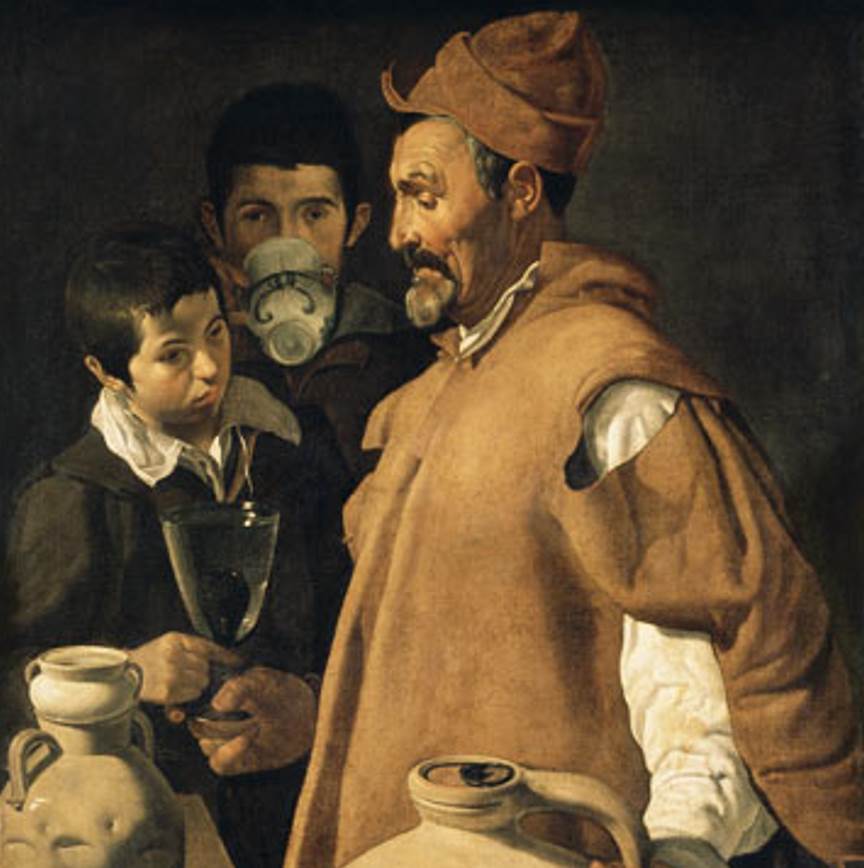
8. Ognissanti Madonna – Giotto di Bondone
- Date created: 1310
- Dimensions: 325 × 204 centimeters (128 × 80 inches)
Ognissanti Madonna is also known as “Madonna Enthroned” and is considered to be the first official painting of the Renaissance, although it still bears significant features of Gothic art. This Giotto painting features glimpses of the naturalism and realistic depiction of the subjects that emerged during this art movement.
This means that this must have been a revolutionary work of art by the painter in the Late Middle Ages. He is therefore considered to be one of the earliest artists who moved away from the overly glorifying Gothic art and into a new realm of drawing from real life.
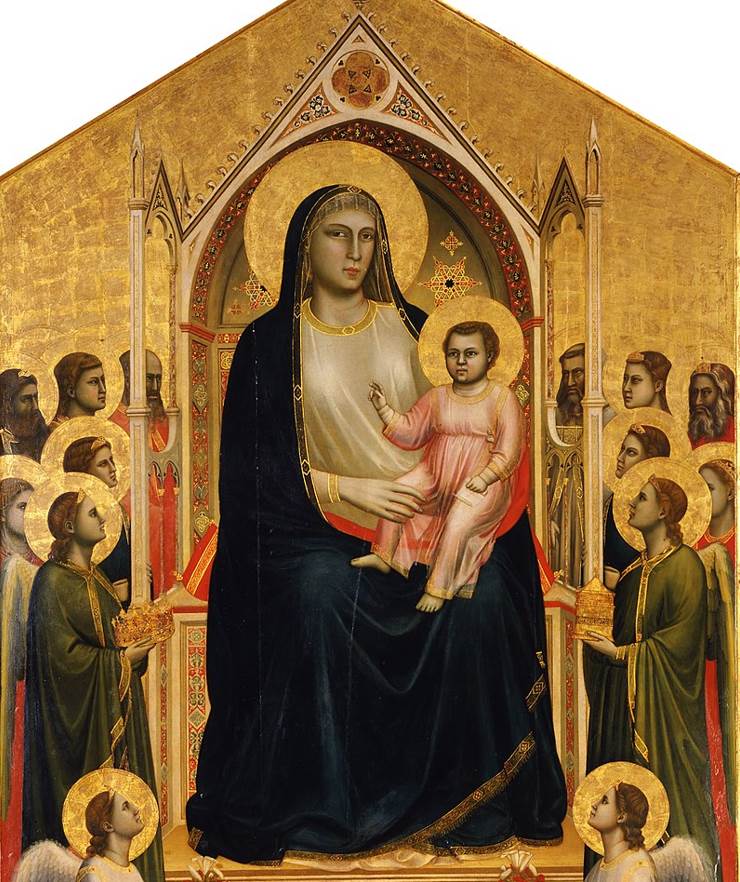
9. Bacchus – Caravaggio
- Date created: 1596
- Dimensions: 95 × 85 centimeters (37 × 33 inches)
Bacchus is a painting by Caravaggio that depicts the Greek god of wine, also referred to as “Dionysus.” The ancient God s depicted as a young and alluring man who is holding a glass of wine as he apparently invites viewers into the scene.
It was commissioned by Cardinal Del Monte, one of the most important patrons of Caravaggio (1571-1610) during his early period in Rome. The troubled, yet renowned Baroque artist previously painted multiple self-portraits, including while he was sick, a work known as “Young Sick Bacchus.”
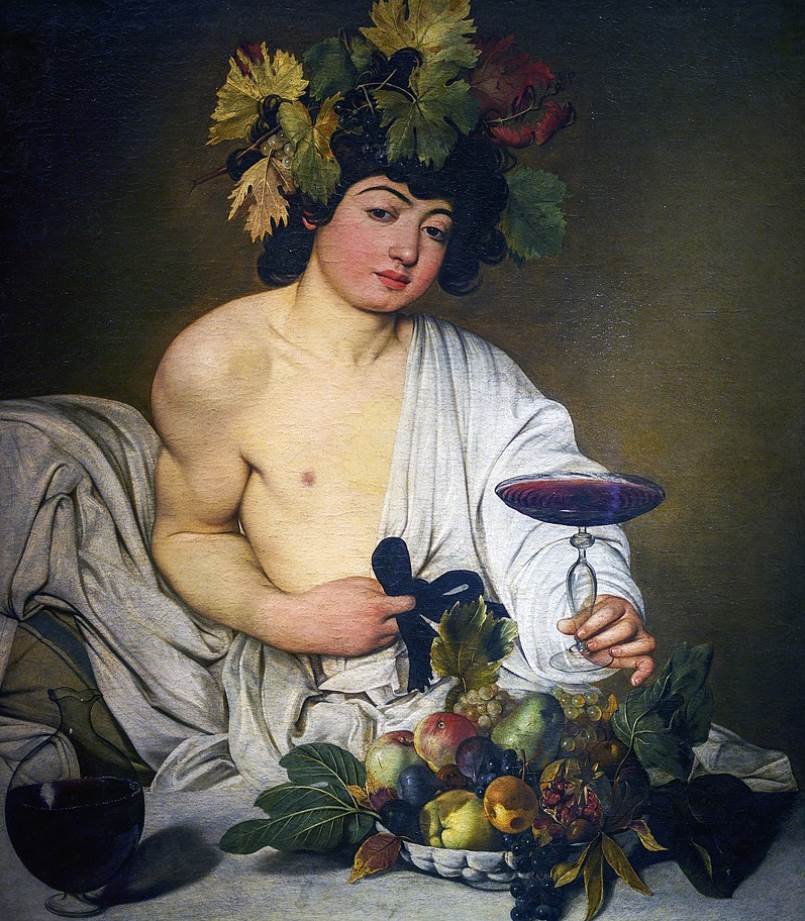
10. Adoration of the Magi – Albrecht Dürer
- Date created: 1504
- Dimensions: 99 × 113.5 centimeters (38.97 x 44.68 inches)
The Adoration of the Magi is considered to be one of the greatest works of art painted by the German artist of the Northern Renaissance, Albrecht Dürer (1471-1528). It was commissioned by the Elector of Saxony and a great patron of the arts named Frederick the Wise (1463-1525) to decorate the Schlosskirche in Wittenberg.
It was painted in between his first and second trip to Italy and can be considered one of the most defining works in German art which integrates elements of both the Northern and Italian Renaissance. Before this work, Dürer was mainly known as a printmaker and the creator of woodcut prints.
